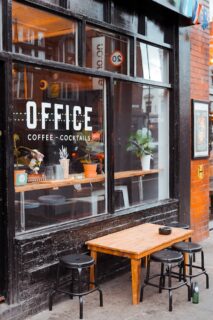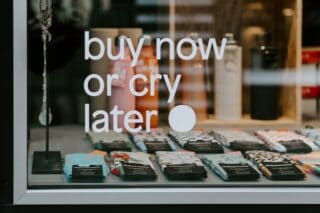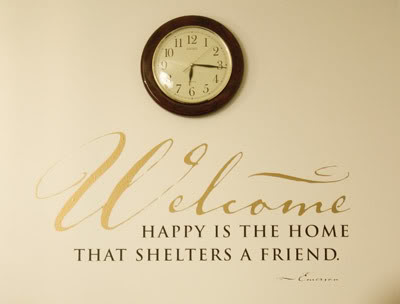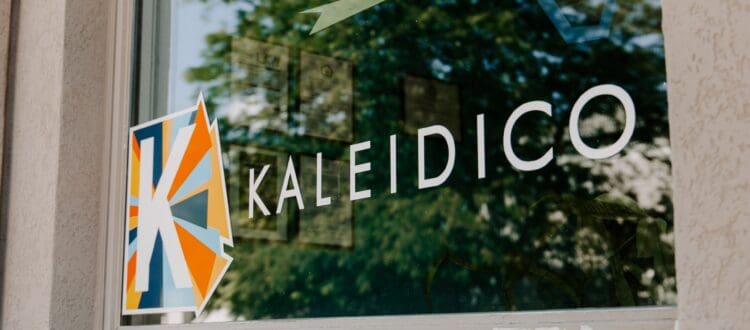Die cut vinyl letters are a popular type of vinyl lettering that is used for a variety of applications. These letters are cut from a sheet of vinyl material using a computer-controlled plotter, which ensures that the letters are precise and consistent in size and shape.
The vinyl material used for die cut letters is durable and long-lasting, making it ideal for outdoor and indoor use. Die cut vinyl letters are available in a wide range of colors, fonts, and sizes, making them a versatile option for signage, advertising, and personalization.
What is Die Cut Vinyl Lettering?
 Die cut vinyl lettering is a type of vinyl lettering that is precisely cut from a sheet of vinyl material using a computer-controlled vinyl plotter. The machine cuts the vinyl into the desired shape, creating letters or designs that are uniform in size and shape.
Die cut vinyl lettering is a type of vinyl lettering that is precisely cut from a sheet of vinyl material using a computer-controlled vinyl plotter. The machine cuts the vinyl into the desired shape, creating letters or designs that are uniform in size and shape.
It is a popular choice for creating custom signs, vehicle graphics, window decals, and other types of personalized designs. It is available in a wide range of colors, fonts, and sizes, allowing for endless customization options. It is a cost-effective way to create high-quality, professional-looking designs that are sure to grab attention and make a lasting impression.
What is Die Cut Vinyl Lettering Made Of?
Die cut vinyl lettering is made of a high-quality vinyl material that is designed to be durable and long-lasting. The vinyl used for die cut lettering is polyvinyl chloride (PVC), which is a synthetic plastic polymer that is known for its strength and flexibility. The vinyl material used is available in a wide range of colors and finishes, including matte, gloss, and metallic.
Also, the vinyl material is backed with an adhesive that allows it to be easily applied to a variety of surfaces, including walls, windows, vehicles, and more. The adhesive used is typically a pressure-sensitive adhesive that allows the letters to be easily applied.
Common Uses for Die Cut Vinyl Letters

- Creating custom signs for businesses, events, and promotions
- Designing and applying vehicle graphics, including lettering and logos
- Decorating walls, windows, and other surfaces in homes, offices, and retail spaces
- Creating personalized gifts, such as mugs, tumblers, and phone cases
- Adding lettering and designs to sports equipment, such as helmets and jerseys
- Designing and applying decals for boats, motorcycles, and other recreational vehicles
- Creating stencils for painting and sandblasting.
Obverse Cut Vs. Reverse Cut Vinyl Lettering
When it comes to die cut vinyl lettering, there are two main types of cuts: obverse cut and reverse cut. Obverse cut vinyl lettering is cut from the front of the vinyl material, leaving the letters and designs intact while removing the excess vinyl around them. This type of cut is ideal for applying lettering to a surface that will be viewed from the outsides, such as a sign or a window.
Reverse cut vinyl lettering, on the other hand, is cut as a “mirror” of the obverse cut vinyl material, leaving the letters and designs as empty spaces while leaving the excess vinyl intact. This type of cut is ideal for applying lettering to a surface that will be viewed from the inside, such as a window or a glass door. When choosing between obverse cut and reverse cut vinyl lettering, it is important to consider the placement and visibility of the lettering to ensure that it is easily readable and visible to your intended audience.
How to Install Die Cut Vinyl Letters
- Clean the surface where the lettering will be applied with soap and water and let it dry completely.
- Position the lettering on the surface using masking tape to hold it in place.
- Remove the backing paper from the lettering, starting from one corner and pulling it away at a 45-degree angle.
- Slowly apply the lettering to the surface, starting from one end and smoothing it out with a squeegee or credit card as you go.
- Once the lettering is fully applied, remove the transfer tape by pulling it away at a 135-degree angle.
- Check the lettering for any air bubbles or wrinkles and smooth them out with a squeegee or credit card.
- Let the lettering sit for at least 24 hours before exposing it to water or other elements.
How Do You Remove Die Cut Vinyl Lettering?
Removing die cut vinyl lettering is a fairly simple process, but it requires some care to avoid damaging the surface underneath. To remove vinyl lettering, start by heating the lettering with a hairdryer or heat gun (on low heat) to soften the adhesive. Once the lettering is heated, use a plastic scraper or finger nail to gently lift the edge of the lettering.
Slowly peel the lettering away from the surface at a 90-degree angle, using the scraper or fingers to help lift the vinyl and avoid tearing it. If the lettering leaves behind any adhesive residue, you can use an “orange peel” adhesive remover to clean the surface. Be sure to test any cleaning solution on a small area first to avoid damaging the surface.
Can Die Cut Vinyl Letters be Reused?
 Die cut vinyl letters are designed to be a one-time use product and are not able to be reused. Once the lettering has been applied to a surface and the adhesive has set, it becomes difficult to remove the lettering without damaging it. Attempting to reuse vinyl lettering can result in tearing or stretching of the material, which can affect the quality and legibility of the design.
Die cut vinyl letters are designed to be a one-time use product and are not able to be reused. Once the lettering has been applied to a surface and the adhesive has set, it becomes difficult to remove the lettering without damaging it. Attempting to reuse vinyl lettering can result in tearing or stretching of the material, which can affect the quality and legibility of the design.
Also, the adhesive on the back of the lettering may lose its effectiveness over time, making it less likely to adhere properly if reused. While it may be tempting to try to reuse vinyl lettering to save money or time, it is recommended to use new lettering for each project to ensure the best results.
How to Care for Your Die Cut Vinyl Letters
Proper care and maintenance of your die cut vinyl letters can help ensure that they last as long as possible and maintain their appearance. To care for your vinyl lettering, start by avoiding harsh chemicals or abrasive cleaners that can damage the vinyl or the surface it is applied to. Instead, use a mild soap and water solution to gently wipe the letters and substrate.
Avoid using pressure washers or high-pressure sprays on vinyl lettering, as this can cause the edges to lift or the lettering to peel away. If you need to remove snow or ice from vinyl lettering, use warm water and a dry towel to avoid refreezing the water. An antifreeze solution like windshield cleaners can be purchased at many retail outlets such as large grocery stores or auto parts stores.
What Surfaces Can You Apply Die Cut Vinyl Letters to?
 They can be applied to a wide variety of surfaces, making them a versatile option for a range of projects. Some common surfaces that vinyl lettering can be applied to include:
They can be applied to a wide variety of surfaces, making them a versatile option for a range of projects. Some common surfaces that vinyl lettering can be applied to include:
- Smooth walls, such as painted drywall or plaster
- Glass surfaces, including windows, mirrors, and glass doors
- Metal surfaces, such as aluminum, steel, or brass
- Plastic surfaces, including PVC, acrylic, and polycarbonate
- Wood surfaces, such as lacquered wood panels or signs
- Vehicles, including cars, trucks, boats, and motorcycles
It is important to note that the surface should be clean, dry, and free of any debris or oils before applying vinyl lettering to ensure proper adhesion. Also, some surfaces may require additional preparation or special adhesive to ensure that the lettering adheres properly.
Will Die Cut Vinyl Lettering Work on Tinted Windows?
Die cut vinyl lettering can work on the outside of tinted windows. If the tinting is very dark, it may be difficult to see darker colored vinyl lettering, such as black or navy blue. In this case, lighter colored lettering, such as white or yellow, may be more visible.
Will Die Cut Vinyl Letters Ruin Your Painted Wall?
 Die cut vinyl letters should not ruin your painted wall if they are applied and removed properly. It is important to ensure that the wall is clean and dry before applying the vinyl lettering to ensure proper adhesion. Oil-based paints are better suited to vinyl letters than latex paints, though.
Die cut vinyl letters should not ruin your painted wall if they are applied and removed properly. It is important to ensure that the wall is clean and dry before applying the vinyl lettering to ensure proper adhesion. Oil-based paints are better suited to vinyl letters than latex paints, though.
What About Cars, Trucks, boats, etc., Can Die Cut Vinyl Letters Ruin Your Paint?
Die cut vinyl letters shouldn’t affect the paint on cars, trucks, boats, or other vehicles if they are applied and removed correctly. Note that long term vinyl usage will often result in a “ghost image” of copy/logos when removed, due to the UV rays of the sun.
Are Die Cut Vinyl Letters Waterproof?
Die cut vinyl letters are waterproof. Vinyl materials are designed to be water-proof, and are able to withstand exposure to rain, snow, and other moisture. However, it is important to note that if the vinyl lettering is exposed to prolonged moisture or submerged in water, it may start to peel or lift away from the surface it is applied to, usually due to rust developing under the paint and/or decals. To ensure the best results, avoid exposing the lettering to excessive moisture whenever possible.
What is the Estimated Lifespan of Die Cut Vinyl Letters?
The estimated lifespan of die cut vinyl letters can vary depending on a range of factors, including the type of vinyl material used, the application surface, and the level of exposure to the elements. In general, high-quality vinyl lettering can last anywhere from 5 to 10 years or more with proper care and maintenance. However, if the vinyl lettering is exposed to direct sunlight, extreme temperatures, or moisture, its lifespan may be shortened. Also, if the vinyl lettering is applied to a surface that is not clean or dry, it may not adhere properly and may start to peel or lift away.
Conclusion
Die cut vinyl letters are a versatile and durable option for a wide range of applications, from indoor wall signage to outdoor vehicle graphics. With the right vinyl material and proper application techniques, vinyl lettering can be applied to a variety of surfaces, including walls, windows, vehicles, and more. With proper care and maintenance, vinyl lettering can provide a professional and eye-catching design element for a range of projects.
Popular Posts:




